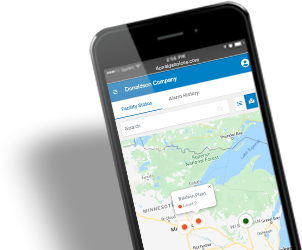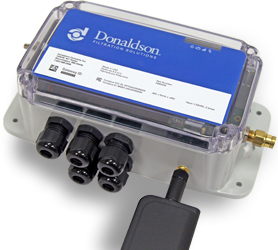Dust Collection for Mining & Mineral Processing Applications
Solutions for Quarries, Mines & Mineral Processors
Reliable Dust Collection & Explosion Mitigation for Quarries, Mines & Mineral Processors
AST Canada supplies reliable dust collection and combustible dust mitigation solutions to fit a variety of Quarrying, Mining & Mineral Processing applications.
With several decades of experience engineering dust collection systems, AST Canada is the name you can trust above all others for solutions to dust, mist & fume collection plus fire & explosion mitigation in industrial settings.
Mining & Mineral Processing Operations
Large volumes of hard and abrasive dust particles are typical in most mining and mineral processing related applications. This dust type rapidly wears out filter media, leading to frequent maintenance or worse: filter leaks. Without effective dust emission control, equipment, process, employees and the environment may be at risk and production could be halted.
Challenges in Cement & Quarrying Operations
Cement manufacturing offers particularly difficult challenges to dust collectors. Based on data from installations, it’s been estimated that as much as 1% of mining throughput can be lost to the surrounding environment. For a 700 TPH quarry, that’s about seven tons per hour lost from conveyors, crushers and screens, and that does not include losses from stockpiles.
Applications
Dust Control in Specific Areas
The following is a list of some of the typical areas at mines and quarries generating dust that can be controlled by dust collection equipment:
- Rail or truck dumps
- Crushers
- Screens
- Conveyor belt transfer points
- Silos or bin filling
- Rail, barge or truck loading
Guidelines to Practical Dust Collection
Years of experience in mining and quarry dust control has highlighted a number of significant points:
Good Design and Equipment Selection Is Essential
Anything marginal in either design or selection results in immediate or short term inadequacies in collector performance. The difference in selections between an effective and ineffective dust collector is often much narrower than in many other industries.
Everywhere That Material Is Supposed to Drop Through Air, Dust Is Generated
The most obvious dust generation points may seem to be conveyor transfer points and feed points from screens and crushers. But often, oversized feed-outs from screens or transfer of large product into bins will generate significant dust.
Dust Collectors Philosophy: Source or Central
Two basic strategies exist for applying dust control to mines and quarries; source collection (putting the dust collector at the source of the dust emission so collected dust can be deposited directly back into the process stream) or centralized collection (putting the collector in a central location where dusty air is ducted to the collector and discharged as a separate process stream).
Source Collection Operational Advantages
Source Collection Operational Advantages Include:
- Lower capital costs as less ducts, and fewer hoppers, screw conveyors or rotary valves are typically required.
- Fewer maintenance problems as fewer ducts or hoppers are being used that can block or bridge. In addition, since there are fewer hoppers, there are fewer hopper discharge devices that need to be maintained.
- A shutdown of one unit may result in temporary increased emissions in a single area, but will be unlikely to necessitate a complete plant shutdown.
Dust Collection Considerations
The following points need to be considered in the selection of central dust collectors for mining and quarrying applications:
- Mine and quarry dust is often abrasive and particle impact against filter media needs to be considered to avoid possible filter damage. This requires consideration of incoming air velocity, dust distribution, and air patterns within the collector.
- Dust removal and disposal requires careful consideration to avoid blockages, equipment abrasion, secondary dust emissions, and higher costs for maintenance and materials handling.
Source collection systems may be easier to deal with since hoppers and ducting are often not used. But when using source collection, the following should be considered:
- Since collectors are often much closer to the source of dust generation, be aware of any water or oil in the dust as this could create problems with filter media.
- Filter abrasion typically is not an issue, however, if the source collector is being used as a bin vent, place the collector as far from the inlet as possible to avoid abrasion and/or unnecessarily high dust loading.
Related Products
Cartridge
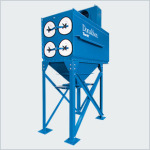
Downflo® Evolution
The Donaldson Torit® Downflo® Evolution (DFE) cartridge dust collector is capable of reducing equipment size and the number of required filters by up to 40%.
PowerCore®
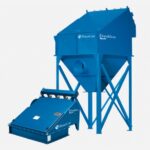
CP Series
Donaldson Torit® PowerCore® CP Series cartridge dust collectors use smaller, more efficient filters compared to baghouse models with a footprint up to 50% smaller.
Baghouse
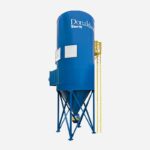
Rugged Pleat
The Donaldson Rugged Pleat (RP) Baghouse sets a new standard for baghouse dust collector performance, combining advanced collector design with superior filtration technology in our most maintenance-friendly design ever.
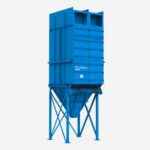
Dalamatic®
The Dalamatic® baghouse dust collector uses Dura-Life™ envelope-shaped bag filters, providing greater movement to dislodge dust cakes during pulsing.
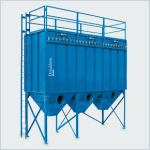
Modular Baghouse
Donaldson Torit® Modular Baghouse dust collectors deliver reliable, efficient, continuous-duty, pulse jet operation in a compact design with easy maintenance.
IoT Enabled with iCue™ Connected Filtration Service
Resources
Related Articles
Local Case Study
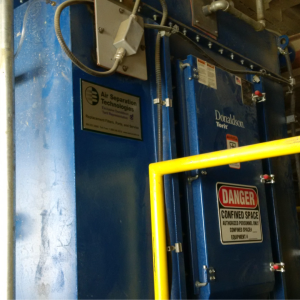
LaFarge North America
Dust is captured at-source by using multiple capture hoods on the conveyor tunnel & then transported through rigid ductwork at high velocity (4000 FPM) to a 5,500 CFM 64FS8 baghouse dust collector.

AST Canada has been helping clients find solutions for their unique Dust, Mist & Fume Collection needs for more than 40 years.
We can help you too.

